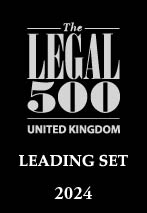What are Legal Highs?
The term ‘legal highs’ was originally used to define substances that contained stimulants/mood-altering properties, which had not yet been banned by law. These substances often resembled similarities to illegal drugs in terms of the effects they gave, and they often brought with them some extremely dangerous and life-threatening consequences.
Although ‘legal highs’ are still very much a problem in that new drugs are being distributed and used all of the time, but the term legal highs is no longer applicable to describe these drugs. This guide will explain all, starting with the dangers of these stimulants.
Potential Risks and Dangers of Legal Highs
One of the great dangers associated with so-called ‘legal highs’ is that the chemicals within them do not receive proper testing before distribution. This means that the safety of these drugs is unknown and often dangerous. Side-effects have been known to include seizures, comas and death with some legal highs.
Unfortunately, the death toll from legal highs has been on the rise in recent years, as the Independent reports. Some legal highs contain traces of banned substances, and unfortunately legal highs have become easier to get a hold of thanks to the internet.
The Confusion Surrounding ‘Legal’ Highs
Labelling substances as ‘legal highs’ unfortunately causes some confusion to those buying and using the substances. The use of the word ‘legal’ can lead people to believe that the Government have legalised the drug, when in fact it has previously been that these substances simply hadn’t been illegalised yet.
Psychoactive Substances Act
However, the government play an active role in taking action against legal highs, and it is now a punishable offence to produce, distribute, and sell legal highs, as a result of the Psychoactive Substances Act. Previously, distributers, sellers and users were able to skirt around the law as the particular drugs referred to as legal highs had not yet been illegalised.
The Psychoactive Substances Act targets ‘psychoactive substances’, which legal highs contain. The purpose of this act is to eradicate the problems faced with the Misuse of Drugs Act, as people were getting around the law by producing new substances that were similar to those that were illegal. With the new act in place, the government is able to crack down on ‘legal highs’, and once the act came into effect in 2016, it was and is no longer legal to produce, supply, or import these drugs.
The act doesn’t replace the existing Misuse of Drugs Act, which came into effect in 1971, but instead works alongside it. The same goes for the Temporary Class Drug Orders and Human Medicines Regulation, but the Intoxicating Substances Supply Act has been repealed.
Penalties as a Result of the Psychoactive Substances Act 2016
Penalties range from up to 12 months with a fine, to up to 7 years and a fine. The extent of the penalty depends on whether an individual possesses, supplied, produced, or imported/exported drugs under the act, and whether the case reached the Magistrates Court or Crown Court.
Our criminal barristers regularly deal with drug-related offences, and have a lot of experience in a wide variety of cases. To get in touch with our legal team, fill out our online form.


